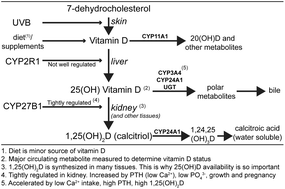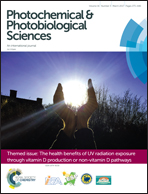Sunlight exposure is just one of the factors which influence vitamin D status
Abstract
Studies on the determinants of vitamin D status have tended to concentrate on input – exposure to ultraviolet B radiation and the limited sources in food. Yet, vitamin D status, determined by circulating concentrations of 25-hydroxyvitamin D (25(OH)D), can vary quite markedly in groups of people with apparently similar inputs of vitamin D. There are small effects of polymorphisms in the genes for key proteins involved in vitamin D production and metabolism, including 7-dehydrocholesterol reductase, which converts 7-dehydrocholesterol, the precursor of vitamin D, to cholesterol, CYP2R1, the main 25-hydroxylase of vitamin D, GC, coding for the vitamin D binding protein which transports 25(OH)D and other metabolites in blood and CYP24A1, which 24-hydroxylates both 25(OH)D and the hormone, 1,25-dihydroxyvitamin D. 25(OH)D has a highly variable half-life in blood. There is evidence that the half-life of 25(OH)D is affected by calcium intake and some therapeutic agents. Fat tissue seems to serve as a sink for the parent vitamin D, which is released mainly when there are reductions in adiposity. Some evidence is presented to support the proposal that skeletal muscle provides a substantial site of sequestration of 25(OH)D, protecting this metabolite from degradation by the liver, which may help to explain why exercise, not just outdoors, is usually associated with better vitamin D status.

- This article is part of the themed collections: 2017 Perspective articles collection and The health benefits of UV radiation exposure through vitamin D production or non-vitamin D pathways


 Please wait while we load your content...
Please wait while we load your content...